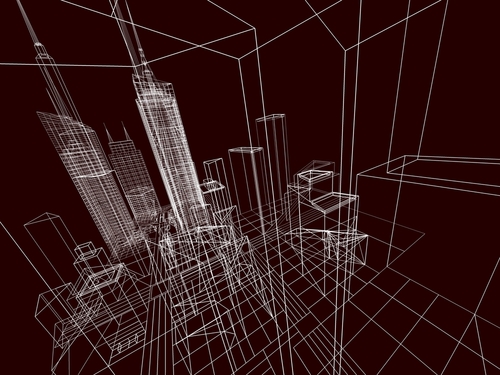
Technology is having a profound impact across the commercial real estate industry, be it in developing, designing, building or leasing commercial space. Not surprisingly, new technology in commercial real estate has been a hot topic of discussion at industry events, including this year’s NAIOP Commercial Real Estate Conference. Whether your company is a relatively smaller start-up, or an established brand with decades of industry experience, understanding and knowing how to best leverage new, innovative technology is key to your competitive advantage, and ensuring future success.
However, when comes to terms like “augmented reality” and “cloud-based platforms,” many of us have some catching up to do. With that in mind, here’s a brief look at five technology trends that are currently shaping, or have the potential to shape, the future of CRE. Each one is worthy of its own blog. We welcome any additional thoughts you may have on the future of technology in CRE in the comments below.
Current Technology and Trends in Commercial Real Estate (CRE)
Virtual and Augmented Reality
Virtual reality (VR) describes software that allows a person to explore a completely “virtual,” 360-degree, 3D environment. Using VR technology, landlords and property managers can provide prospective tenants with an immersive and interactive tour of a property, even when that property is located halfway around the globe. Augmented reality (AR) allows the user to view a real-world environment, such as a commercial office space, and add computer-generated objects to or otherwise reimagine the interior or exterior design. Both technologies provide unprecedented access to a built or unbuilt environment to developers, builders and customers. In fact, AR can be used to help maintain existing buildings. A custodian or repair person can use a tablet or smartphone to scan a piece of equipment and view its internal parts and maintenance schedule.
Building Automation and Other Amenities
When it comes to the commercial office environment, employers and employees have come to expect the amenities more commonly associated with residential living. Smartphone and touch screen-controlled lighting and thermostats, as well as Bluetooth technology to lock and unlock doors, are just a few examples of residential amenities that have found their way into office, retail, and mixed-use developments; they are defining the 21st century work environment.
Cloud-Based Platforms
Cloud-based technology, where data, programs and other tools are securely stored on the Internet rather than a single hard drive or in a file in a filing cabinet, is changing the way commercial real estate professionals collaborate and how developers, investors and potential customers connect and collaborate. Since each party is able to access documents and data immediately, business can be transacted more efficiently and at a greater speed.
Crowdfunding
Investing in CRE has undergone a sea change thanks to crowdfunding technology. A number of building owners and developers are using online crowdfunding platforms to raise capital in smaller amounts from several different individual investors. Crowdfunding can be used to help with any size or type of real estate project, be it a single home or a large, commercial space. Currently, only accredited investors may participate in a crowdfunding deal. If this changes, the playing field will become even wider and more complex.
The Internet of Things (IoT)
The Internet of Things (IoT) simply refers to the potential of objects, devices, or “things,” no matter how big or small, to be connected with a physical on/off switch to the Internet and its network of additionally linked object. “Things” in IoT also refers to people, which may be one reason why the term creates a lot of confusion even among the most forward thinking of professionals. In CRE, IoT certainly has the potential to become a part of the process of building site selection, planning and operations, as well as many other aspects of development. With the analyst firm Gartner predicting over 26 billion devices will be connected to the Internet by 2020, and cybersecurity a major concern, it is essential that CRE professionals educate themselves about this still-developing technology.
How all of these intersecting new trends and technologies will ultimately impact CRE as we know it is still unclear. Whether we want to admit it or not, change is upon us. As long as everyone with a stake in our industry keeps an open mind, and takes time to learn how to apply what may be a new and unfamiliar set of tools, the future of our industry will be in good hands.
About PinPoint Commercial
PinPoint Commercial has decades of experience in industrial, medical, senior housing, and retail construction and land development. Our projects have utilized the latest in energy-efficient, smart building materials, and include several technologically innovative senior living communities located across the U.S. To learn more about the PinPoint difference, contact us using our online form.


